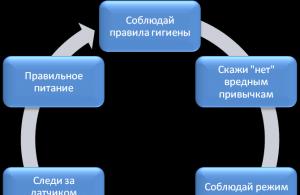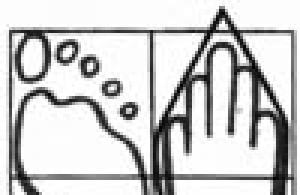Russia cannot yet be called a country of pickups, unlike the USA and Australia, where this segment of cars is in great demand. But we also have more and more drivers who prefer a pickup truck as a multifunctional and comfortable means of transportation.
 Pickup from China - Great Wall Wingle 5
Pickup from China - Great Wall Wingle 5 Price - 830,000 rubles
The Chinese pickup truck was created in the style of its more “thoroughbred” counterparts - powerful body panels and attractive design will allow it to be used for its intended purpose and not only. And the affordable cost makes it possible to turn a blind eye to assembly errors and not the most impressive technical indicators.
And yet the Great Wall Wingle 5, in which not everyone recognizes the “Chinese”, equipped with a 2.2-liter gasoline engine in tandem with a 5-speed manual transmission, and also with a good interior design, will be an excellent choice when buying a “workhorse”.
Nissan NP300
 Affordable Japanese Nissan NP300
Affordable Japanese Nissan NP300 Price - from 1,053,000 rubles(update: discontinued)
The most affordable purebred "Japanese" in Russia has long been a favorite of pickup truck fans. For him there is a place not only in the forest or arable land, but also in the urban landscape.
A 4-door cab, an “eternal” design, a powerful and economical 2.5-liter turbodiesel, well-thought-out ergonomics with a minimum of frills, as well as 24 cm of clearance and a load capacity of 1,100 kg - you won’t find a better pickup truck for such a price!
 Korean pickup truck SsangYong Actyon Sports
Korean pickup truck SsangYong Actyon Sports Price - from 1,159,000 rubles(update: discontinued)
This Korean pickup surprisingly harmoniously combines the advantages of a truck, the off-road capability of an SUV and the swift design of a crossover with its flowing lines.
Add to this gasoline and diesel engines, the ability to equip a pickup truck with an “automatic”, a stylish interior and competent ergonomic solutions - who hasn’t run to the dealer yet?
 Unpretentious and hardy Mitsubishi L200
Unpretentious and hardy Mitsubishi L200 Price - from 1,529,000 rubles
The iconic pickup truck, adored by jeepers participating in trophy raids and jeep sprints. They are not embarrassed by plastic rattling on bumps and a simple interior design.
All this pickup more than pays off with powerful diesel engines, all-wheel drive, SuperSelect gearbox, energy-intensive suspension and the widest possible tuning options. Men's car - masculine qualities!
Overview of the new fifth-generation Mitsubishi L200 -
 Comfortable pickup Nissan Navara
Comfortable pickup Nissan Navara Price - from 1,443,000 rubles(update: discontinued)
A stylish pickup, generously trimmed with chrome, is not often seen on village roads - it almost always storms obstacles in megacities. And its first-class level of comfort and chic interior design are conducive to movement in the city.
Two powerful diesel engines (190 hp and 231 hp), "mechanics" and "automatic", and a well-tuned suspension will give you confidence and comfort.
 Popular Japanese Toyota Hilux
Popular Japanese Toyota Hilux Price - from 2,086,000 rubles
Rival Mitsubishi L200 is not inferior to him in popularity. The Japanese pickup combines prestige and practicality. It is not shameful to appear in the world on it, and outside the city it will not let its owner down.
There are no gasoline engines - only diesel engines of 2.5 and 3 liters of volume, which get along well with both “mechanics” and automatic transmission. Yes, and the interior of Toyota is in no way inferior to appearance and technical data.
Powerful engines, high-tech transmissions, including 8-speed automatic transmissions, luxurious finishing materials, balanced ergonomics - in the Volkswagen Amarok you have to remind yourself that you are driving in a pickup truck!
Fiat Fullback
 A new take on the proven L200
A new take on the proven L200 It is an Italian version of the Mitsubishi L200. In our country, the machine is only available with a double cab.
Price — from 1,759,990 rubles
We briefly ran through all the models of pickup trucks officially presented on the Russian market. The selection is small, but it's there. Compare, choose, buy. Pickups are great!
Toyota Motor Corporation (Jap. Toyota jido:sha kabushigaisha) or Toyota is Japan's largest automotive corporation, which also provides financial services and has several additional business lines. The headquarters is in Toyota, Aichi Prefecture (Japan). The company is ranked 5th in the Fortune Global 500 (2010).
Toyota Motor Corporation is the principal member of the Toyota Group. The Toyota brand is mostly associated with this company. The company logo depicts a stylized weaving loop and is associated with the fact that the company began its activities with the production of automatic looms.
For the 2007-2008 fiscal year ending March 31, 2008, the corporation sold 9.37 million vehicles. Revenue for 2008 was $204.352 billion, net profit - $-4.349 billion.
The company produces passenger cars, trucks and buses under the brands Toyota, Lexus, Scion, Daihatsu, Hino.
Of the company's pickup trucks, Toyota Tundra and Toyota Tacoma are known.
Toyota Pickups on display at the Pickup Center
Description of Toyota Tundra
The pickup truck was first introduced in 99 and immediately became a favorite of Americans due to its reliability, quality and relatively low price. Prior to this, full-size pickups were the lot of only American brands. Toyota became a pioneer and combined the best of American and Japanese cars in the Tundra.
The design turned out to be ordinary: a strong spar frame, an independent front torsion bar suspension on double wishbones and a rigid rear axle on springs. Two drive versions are available: traditional rear-wheel drive or automatic all-wheel drive.
A big pickup truck needs a big engine. Toyota installed two engines on the first generation Tundra: a 3.4-liter V6 (190 hp) or a 4.7-liter V8 with 245 hp.
In 2003, Toyota specialists carried out a deep restyling of the Tundra pickup truck. The exterior was changed (radiator grille, headlights, lights, front and rear bumpers) and the interior was refreshed. The power of the 4.7-liter V8 increased by 26 “horses”, and the 3.4-liter engine was replaced by a new 4.0-liter V6 with a capacity of 236 hp. The vast majority of the Tundra had a 5-speed automatic, and a 6-speed manual was quite rare.
The second generation of the pickup appeared in 2006 at the Chicago Auto Show. The appearance of the car has radically changed: the Tundra has become larger and rough chopped forms have appeared - a real male “truck”! Now Toyota Tundra is one of the largest in the class. A third type of cabin has been added - now standard, one and a half and double are available.
The increased weight and size required new, more powerful powertrains. And especially for the luxury version of the Tundra, they created a new V8 with a volume of 5.7 liters and a power of 381 hp. It will be paired with a new six-speed automatic transmission. On more budget modifications, engines and transmissions from the first generation remained.
The new generation boasts a host of electronic assistants that allow you to tow heavy loads and a trailer without any problems even in the most difficult weather conditions. Tundra in luxury configuration is the ideal car for the traveler.
Model range of Toyota Tundra, presented in the Pickup Center
Initially, the Toyota Hilux pick up car was developed as a universal vehicle for doctors and the military - improved cross-country ability made it possible to cope with any off-road conditions, and a spacious luggage compartment made it possible to transport bedridden patients and bulky cargo. However, the car did not stay within the narrow limits of potential buyers - today the Toyota Helix pickup truck is highly popular among motorists from all over the world.
The very first Toyota Hiluh model was produced with a single cab. In the process of refinements and improvements, two more versions of the body appeared - with a one-and-a-half and a double cab. Domestic buyers are given the opportunity to buy a 4-door body version with a spacious double cab.
Toyota Hilux pickup is distinguished by a wide variety of diesel and gasoline engines of various modifications. In the domestic car market, the choice is limited to two options for a diesel power unit with a volume of 2.5 and 3 liters, which can be equipped with a manual or automatic transmission. Rear-wheel drive modifications, which are quite common in America and Asia, are not sold here, deliveries are limited to the all-wheel drive version 4x4.
Updated version of Toyota Hilux
The restyled version of the 2012 Toyota Helix differs from the previous model in a more aggressive shape of the radiator grille, a new hood and front bumper design, as well as a modified head optics and a different shape of the rear and front fenders. The length of the pickup "grew" to 5,260 mm, the width is 1,835 mm, and the "growth" is 1,850 mm. Clearance - 212 mm.
Toyota Hilux 2012-2013
Toyota Hilux Exterior and Interior
The appearance of the Hilax pickup truck is simple and uncomplicated. If you look at a photo of a restyled model, then the only thing that catches your eye is a voluminous “nostril” that serves to take in air. All other design details of the Toyota Hilux are already so familiar to everyone that its traditional elements, such as a hood parallel to the ground and a radiator grill, large square-shaped headlights, etc., go unnoticed.

As standard, we have an unpretentious and practical interior of the cabin - high-quality plastic was chosen as the finishing material, which perfectly withstands all tests. The dashboard is made in a racing style and consists of three rings. The steering wheel is very large, almost reaches the driver's knees. a fairly high driving position provides excellent visibility. The "Lux" package includes a modern multi-system on the center console, which is complemented by chic leather upholstery.






auto.ironhorse.ru
Toyota pickups all photo models. Models Toyota / Toyota
Toyota (the whole range of cars) prices and specifications, photos and reviews
Not everyone knows, but the "chronicle" of one of the world's leading automakers began in 1926 (and was not initially associated with cars) - it was then that Toyoda Automatic Loom Works, Ltd., founded by Sakichi Toyoda and engaged in the production of automatic looms...
However, his son, Kiichiro Toyoda, like all young people of that time, literally dreamed of "iron horses", as a result of which in 1929 he traveled to the USA and Europe to study the automotive industry, and after returning home, he set fire to creating his own cars with petrol engines...
So in 1933, an automobile department appeared as part of Toyoda Automatic Loom Works, the work of which was supported in every possible way by the Japanese government ... The very next year, the first type A engine was produced, which later became the "heart" of the first passenger car of the A1 brand, which was published in May 1935, and the G1 truck, which debuted in August of the same year ... The car called "AA" entered the series already in 1936 ...
As an independent company, "Toyota Motor Co., Ltd" was formed only in 1937, separated from the "parent" concern and changing one letter in the name - to simplify pronunciation ...
However, the plans of the automaker were confused by the outbreak of World War II, which forced him to use all his capacities for the production of military products: trucks, amphibians, all-terrain vehicles and other things ...
After the end of hostilities and the surrender of the Land of the Rising Sun, Toyota focused on the production of tools and pans, since the United States imposed a ban on the manufacture of vehicles, which was valid until 1947 ... And only when the Japanese were again allowed to produce cars - so "on the light has appeared" passenger car "Model SA" ...
Despite the fact that the 1950s began for the machine builder in the conditions of the most severe financial crisis that covered all of Japan, he quickly got out of it, and not with the biggest losses ...
So already in 1952, the company entered its heyday, actively developing its own designs, conducting extensive research and increasing the model range ... This was to a certain extent facilitated by the appearance in 1951 of the civilian SUV Land Cruiser (later one of the most legendary models of the brand) ...
In the 1960s, the economic situation in Japan began to improve, which had a positive effect on automakers: Toyota not only introduced several new cars (in 1961 - Publica, in 1966 - Corolla), but also began to actively develop dealerships. centers abroad, including in the USA, Europe, Asia and South Africa…
In the 1970s, the Japanese automaker took a course on the construction of new plants and the constant improvement of technology, and was also noted for several outstanding models ... For example, in 1970 the Celica was released, in 1978 - Carina, Sprinter and Tercel ...
In the 1980s, Toyota Motor finally established itself as the largest automaker in Japan and one of the leading ones on the world stage, and also overcame a significant milestone for itself - the 50 millionth car produced under its own brand ... But this was not the only thing, so how the machine builder again pleased the public with new models: in 1982 - Camry, in 1984 - 4Runner ...
In the 1990s, the Japanese company continued its global expansion, opening branches in more and more countries ...
In 1994, the automaker introduced the world's first RAV4 crossover (at least, many experts agree in this opinion), after which it focused on the development of technologies to protect the environment ... So in 1997, the Prius model was created, equipped with a hybrid power plant …
In the new millennium, Toyota Motor stepped into the role of one of the leading automobile manufacturers in the world, but at the same time did not stop at the achieved results and continued to actively improve ...
As a result, already in 2012, the machine builder left behind the mark of 200 million produced "iron horses", and a few years later he completely established himself as a leader on a planetary scale - now he annually produces more than 8.5 million cars.
auto.ironhorse.ru
Model range of Toyota Tundra pickups from Pickup Center: photos, videos, prices
Toyota Motor Corporation (jap. Toyota jido:sha kabushigaisha) or Toyota is Japan's largest automotive corporation, also providing financial services and having several additional business lines. The headquarters is in Toyota, Aichi Prefecture (Japan). The company is ranked 5th in the Fortune Global 500 (2010).
Toyota Motor Corporation is the principal member of the Toyota Group. The Toyota brand is mostly associated with this company. The company logo depicts a stylized weaving loop and is associated with the fact that the company began its activities with the production of automatic looms.
For the 2007-2008 fiscal year ending March 31, 2008, the corporation sold 9.37 million vehicles. Revenue for 2008 amounted to $204.352 billion, net profit - $-4.349 billion.
The company produces passenger cars, trucks and buses under the brands Toyota, Lexus, Scion, Daihatsu, Hino.
Of the company's pickup trucks, Toyota Tundra and Toyota Tacoma are known.
Toyota pickups presented at the Pickup Center
Description of Toyota Tundra
The pickup truck was first introduced in 99 and immediately became a favorite of Americans due to its reliability, quality and relatively low price. Prior to this, full-size pickups were the lot of only American brands. Toyota became a pioneer and combined the best of American and Japanese cars in the Tundra.
The design turned out to be ordinary: a strong spar frame, an independent front torsion bar suspension on double wishbones and a rigid rear axle on springs. Two drive versions are available: traditional rear-wheel drive or automatic all-wheel drive.
A big pickup truck needs a big engine. Toyota installed two engines on the first generation Tundra: a 3.4-liter V6 (190 hp) or a 4.7-liter V8 with 245 hp.
In 2003, Toyota specialists carried out a deep restyling of the Tundra pickup truck. The exterior was changed (radiator grille, headlights, lights, front and rear bumpers) and the interior was refreshed. The power of the 4.7-liter V8 increased by 26 “horses”, and the 3.4-liter engine was replaced by a new 4.0-liter V6 with a capacity of 236 hp. The vast majority of the Tundra had a 5-speed automatic, and a 6-speed manual was quite rare.
The second generation of the pickup appeared in 2006 at the Chicago Auto Show. The appearance of the car has radically changed: the Tundra has become larger and rough chopped forms have appeared - a real male “truck”! Now Toyota Tundra is one of the largest in the class. A third type of cabin has been added - now standard, one and a half and double are available.
The increased weight and size required new, more powerful powertrains. And especially for the luxury version of the Tundra, they created a new V8 with a volume of 5.7 liters and a power of 381 hp. It will be paired with a new six-speed automatic transmission. On more budget modifications, engines and transmissions from the first generation remained.
The new generation boasts a host of electronic assistants that allow you to tow heavy loads and a trailer without any problems even in the most difficult weather conditions. Tundra in luxury configuration is the ideal car for the traveler.
Model range of Toyota Tundra presented in the Pickup Center
www.pickup-center.ru
crossover
SUV
crossover
SUV
SUV
crossover
Archive of Toyota models
History of the Toyota brand / Toyota
Toyota Motor is the largest Japanese automobile corporation, part of the Toyota Group, headquartered in the city of the same name (the central part of the island of Honshu). The company was founded in 1935 at a textile machine factory, owned at the time by entrepreneur Sakichi Toyoda. His son Kiichiro Toyoda (Kiichiro Toyoda) in 1930 initiates the production of cars. This decision was made after a trip to Europe and the United States, where he got acquainted with the automotive industry. The first-born of the brand was the Model A1, which appeared in 1936.
xn--44-6kchdmw3bgiawoo4b.xn--p1ai
Toyota - all Toyota models 2018: specifications, prices, modifications, videos, dealers
All Toyota models of 2018: Toyota car lineup, prices, photos, wallpapers, technical specifications, modifications and configurations, reviews from Toyota owners, Toyota brand history, Toyota models review, video test drives, archive of Toyota models. Also here you will find discounts and hot offers from official Toyota dealers.
crossover
SUV
crossover
SUV
SUV
crossover
Archive of Toyota models
History of the Toyota brand / Toyota
Toyota Motor is the largest Japanese automobile corporation, part of the Toyota Group, headquartered in the city of the same name (the central part of the island of Honshu). The company was founded in 1935 at a textile machine factory, owned at the time by entrepreneur Sakichi Toyoda. His son Kiichiro Toyoda (Kiichiro Toyoda) in 1930 initiates the production of cars. This decision was made after a trip to Europe and the United States, where he got acquainted with the automotive industry. The first-born of the brand was the Model A1, which appeared in 1936. In the same year, four G1 trucks were exported to China. In 1937, the company separated from the factory and received the name Toyota Motor Co., Ltd. In 1947, the Toyota Model SA rolled off the assembly line. Export to the United States of Toyota Crown vehicles occurs in 1957. In 1959, Toyota cars began to be produced in Brazil.
In 1961, a small 3-door sedan Toyota Publica appears with economical fuel consumption. The company produces its millionth car in 1962. In 1966, the famous passenger model Corolla was born, which successfully rolls off the assembly line at the present time. In 1970, three new models are developed - Sprinter, Celica and Carina. In 1972, the company celebrates the release of its 10 millionth car. Tercel - the first model with front axle drive is born in 1978. The Mark II car is being developed towards the end of the seventies. The legendary first-generation Camry sedan goes on sale in the early eighties. In 1986, the company produces its 50 millionth car. Two years later, Toyota creates a premium sub-brand Lexus for the production of luxury models. In the late 80s, Corolla II, Corsa and 4Runner cars came out of the gates of the company. In 1990, the company's own design center was opened. The Toyota concern at this time is actively developing, expanding its presence in many markets.
In 1996, the company has produced 90 million vehicles since its inception. In the same year, the production of the D-4 engine developed by Toyota, which has direct injection of gasoline into the cylinders, begins in Moscow. In 1997, the Prius is born, equipped with a hybrid engine. A year later, the production of the Avensis passenger car and the legendary Land Cruiser 100 SUV will start. In 1999, the company celebrates the release of the 100 millionth car. In 2001, the 5 millionth Camry is sold in the United States. On the territory of Russia, the official activities of the company began in 2002 with the formation of Toyota Motor LLC. In 2005, the company begins construction of its plant in Shushary (St. Petersburg), two years later, the first car of localized assembly rolled off the assembly line of the enterprise - it became the Toyota Camry (V40) sedan. In 2016, the production of the popular RAV4 crossover began at the Toyota plant near St. Petersburg. Today, Toyota is the world's largest automobile manufacturer, enjoying a high reputation.
auto-russia.ru
Japanese cars (all brands) photos and reviews, prices and specifications
Now it's hard to believe, but the history of the Japanese automotive industry began only in the first decade of the 20th century - that is, later than in the countries of the Old World and the USA. Moreover, at its origins was a banal borrowing from the same Europeans and Americans, which continued until the Second World War ...

The first experiments on the creation of cars with internal combustion engines in Japan date back to 1905 - it was then that engineer Shineitaro Yoshida presented the first omnibus with a gasoline engine, assembled from imported parts ... and two years later, a passenger car was revealed to the public, called "Takuri". But in this case, as they say, “it didn’t work” ...
Another ten years passed before the appearance of the truly first production car in the Land of the Rising Sun - in 1917, the production of the four-door sedan Mitsubishi Model A, created on the basis of the Italian model Fiat Tipo 3 and equipped with a 35-horsepower engine and rear-wheel drive transmission, began ...

And in the future, the Japanese automotive industry developed mainly on the licensed production of foreign "iron horses", and most of the plants were controlled by American and European companies.
In the mid-1930s, the Japanese "crushed" all industrial facilities, as a result of which foreign machine builders were forced to curtail work on the territory of this country. Moreover, in connection with the beginning of the militarization of Japan, many enterprises made a bias towards the creation of military equipment, and cars faded into the background (then only very wealthy people could afford them) ...
After the defeat in World War II and the subsequent occupation of the country, the development of the Japanese auto industry was frozen, which lasted until 1949. But at that time, the automotive industry was in a very deplorable state, which is why almost the entire elite of the country (with the exception of the Ministry of Foreign Trade and Industry) considered this industry unpromising - as a result, local companies were still engaged in direct copying of American models ...
Another war helped the Japanese overcome such a difficult situation - the Korean War, which broke out in the summer of 1950 - the Americans then "full program" loaded factories in the Land of the Rising Sun with orders for the production of military equipment, which allowed local automakers to "stand firmly on their feet" ...
But a special development boom happened to the automotive industry in the 1960s, during the era of the “Japanese economic miracle” - the production of cars increased sharply in the country, and companies began to actively compete with each other (which was only in the hands of ordinary buyers) ...
The tangible growth of the automotive industry in Japan continued in the 1970s - local automakers not only started exporting their products, but also transferred part of their capacities abroad ... And the mechanical engineering reached its highest peak in 1989 - then a total of about 13 million "iron horses" (of which almost half went abroad).
True, already in the early 1990s, the production of cars in Japan decreased to the levels of 1979, and the industry itself fell into stagnation, which lasted until 2002 and was replaced by another growth ...
At the beginning of the 21st century, automakers from Japan began mass organizing assembly branches in Asia, the USA and Europe, as well as more actively conquering the world's leading markets ...
In the 2010s, the Japanese auto industry rightfully occupies one of the leading positions on the planet - the "iron horses" of local machine builders are represented in all existing segments and are distinguished by reliability, progressiveness and high quality. Well, companies from the Land of the Rising Sun annually in total “produce” about 25 million cars.
auto.ironhorse.ru
Model range Toyota Tundra | Pickup Center
The 2009-2011 Toyota Tundra lineup is represented by three models - Regular Cab, Double Cab and Crew Max with a 4x2 and 4x4 wheel arrangement.
Toyota Tundra Regular Cab
Available with standard (Standard Bed 1980 mm) or long trunk (Long Bed 2470 mm).
As well as three engine sizes: 4.0L V6, 4.6L V8 and 5.7L V8.
4x2 5.7L V8 Long Bed with a maximum load capacity of up to 1315 kg.
4x2 4.6L V8 Standard Bed - load capacity 848 kg.
4x2 5.7L V8 Long Bed - includes the ability to transport as a tractor up to 4717 kg.
The V6 Standard Bed has a maximum traction capacity of up to 2.22t.
In the Tundra Regular Cab you can place all the necessary things and they will take up minimal space in the back. The lower armrest is spacious enough to accommodate a medium-sized drinking container. Also behind the front seat there is a large space for voluminous things.

Number of seats: 2 or 3, depending on the configuration.Length: 5329 mmWidth: 2029 mmWheelbase: 3221 mmClearance: 259 mm
Approach angle: 28 degrees (27 degrees for 4x2) Departure angle: 27 degrees (26 degrees for 4x2)
Toyota Tundra Double Cab
Available in two configurations: with a standard (Standard Bed - 1980 mm), or a long trunk (Long Bed 2470 mm).
And also in three engine sizes: 4.0L V6, 4.6L V8 and 5.7L V8.
4x2 5.7L V8 Standard Bed with a maximum load capacity of up to 791kg.
4x2 4.6L V8 Standard Bed load capacity up to 732kg max.
4x2 5.7L V8 Standard Bed - up to 4581 kg when the vehicle is equipped as a tractor.
V6 Standard Bed has a maximum transportable weight for a tractor - 2041 kg.
The interior of the Tundra Double Cab is very spacious exactly where you need it. For passengers sitting in the back, a lot of space is provided. The key point is the angle that the rear seat can recline. It will allow passengers to recline the back as much as possible, taking a comfortable position. And like every Tundra, the Double Cab features three-position seat belts and adjustable headrests on each seat.

Length: 5809 mm
Width: 2029 mm
Wheelbase: 3701 mm
Ground clearance: 264 mm (259 mm for 4x2)
Approach Angle: 29 degrees Departure Angle: 25 degrees (20 degrees for Long Bed)
Toyota Tundra CrewMax Cab
Short trunk (Short Bed - 1675 mm)
Available in two engine sizes: 4.6L V8 and 5.7L V8.
4x2 5.7L V8 max payload up to 750kg.
4x2 4.6L V8 maximum payload up to 703kg.
4x2 5.7L V8 max towing capacity up to 4.5t (when equipped)
Big cabin, everything in its place, CrewMax maximizes space for you, your team and everything. Please note that rear legroom is 120 cm. And CrewMax also has exceptional in its class movable rear seats: they are movable, fold, and can form a horizontal plane.

Number of seats: 5 or 6 depending on configuration.
Length: 5809 mm
Width: 2029 mm
Wheelbase: 3701 mm
Ground clearance: 264 mm (254 mm for 4x2)
Approach angle: 29 degrees (28 degrees for 4x2) Departure angle: 24 degrees (25 degrees for 4x2)
www.pickup-center.ru
Models Toyota / Toyota
All 2020 pickup body models: car lineup Toyota, prices, photos, wallpapers, specifications, modifications and configurations, reviews from Toyota owners, Toyota brand history, Toyota models review, video test drives, Toyota models archive. Also here you will find discounts and hot offers from official Toyota dealers.
Archive of Toyota models
History of the Toyota brand / Toyota
Toyota Motor is the largest Japanese automobile corporation, part of the Toyota Group, headquartered in the city of the same name (the central part of the island of Honshu). The company was founded in 1935 at a textile machine factory, owned at the time by entrepreneur Sakichi Toyoda. His son Kiichiro Toyoda (Kiichiro Toyoda) in 1930 initiates the production of cars. This decision was made after a trip to Europe and the United States, where he got acquainted with the automotive industry. The first-born of the brand was the Model A1, which appeared in 1936. In the same year, four G1 trucks were exported to China. In 1937, the company separated from the factory and received the name Toyota Motor Co., Ltd. In 1947, the Toyota Model SA rolled off the assembly line. Export to the United States of Toyota Crown vehicles occurs in 1957. In 1959, Toyota cars began to be produced in Brazil.
In 1961, a small 3-door sedan Toyota Publica appears with economical fuel consumption. The company produces its millionth car in 1962. In 1966, the famous passenger model Corolla was born, which successfully rolls off the assembly line at the present time. In 1970, three new models are developed - Sprinter, Celica and Carina. In 1972, the company celebrates the release of its 10 millionth car. Tercel - the first model with front axle drive is born in 1978. The Mark II car is being developed towards the end of the seventies. The legendary first-generation Camry sedan goes on sale in the early eighties. In 1986, the company produces its 50 millionth car. Two years later, Toyota creates a premium sub-brand Lexus for the production of luxury models. In the late 80s, Corolla II, Corsa and 4Runner cars came out of the gates of the company. In 1990, the company's own design center was opened. The Toyota concern at this time is actively developing, expanding its presence in many markets.
In 1996, the company has produced 90 million vehicles since its inception. In the same year, the production of the D-4 engine developed by Toyota, which has direct injection of gasoline into the cylinders, begins in Moscow. In 1997, the Prius is born, equipped with a hybrid engine. A year later, production of the Avensis passenger car and the legendary Land Cruiser 100 SUV will start. In 1999, the company celebrates the release of the 100 millionth car. In 2001, the 5 millionth Camry is sold in the United States. On the territory of Russia, the official activities of the company began in 2002 with the formation of Toyota Motor LLC. In 2005, the company begins construction of its plant in Shushary (St. Petersburg), two years later, the first car of localized assembly rolled off the assembly line of the enterprise - it became the Toyota Camry (V40) sedan. In 2016, the production of the popular RAV4 crossover began at the Toyota plant near St. Petersburg. Today, Toyota is the world's largest automobile manufacturer, enjoying a high reputation.









